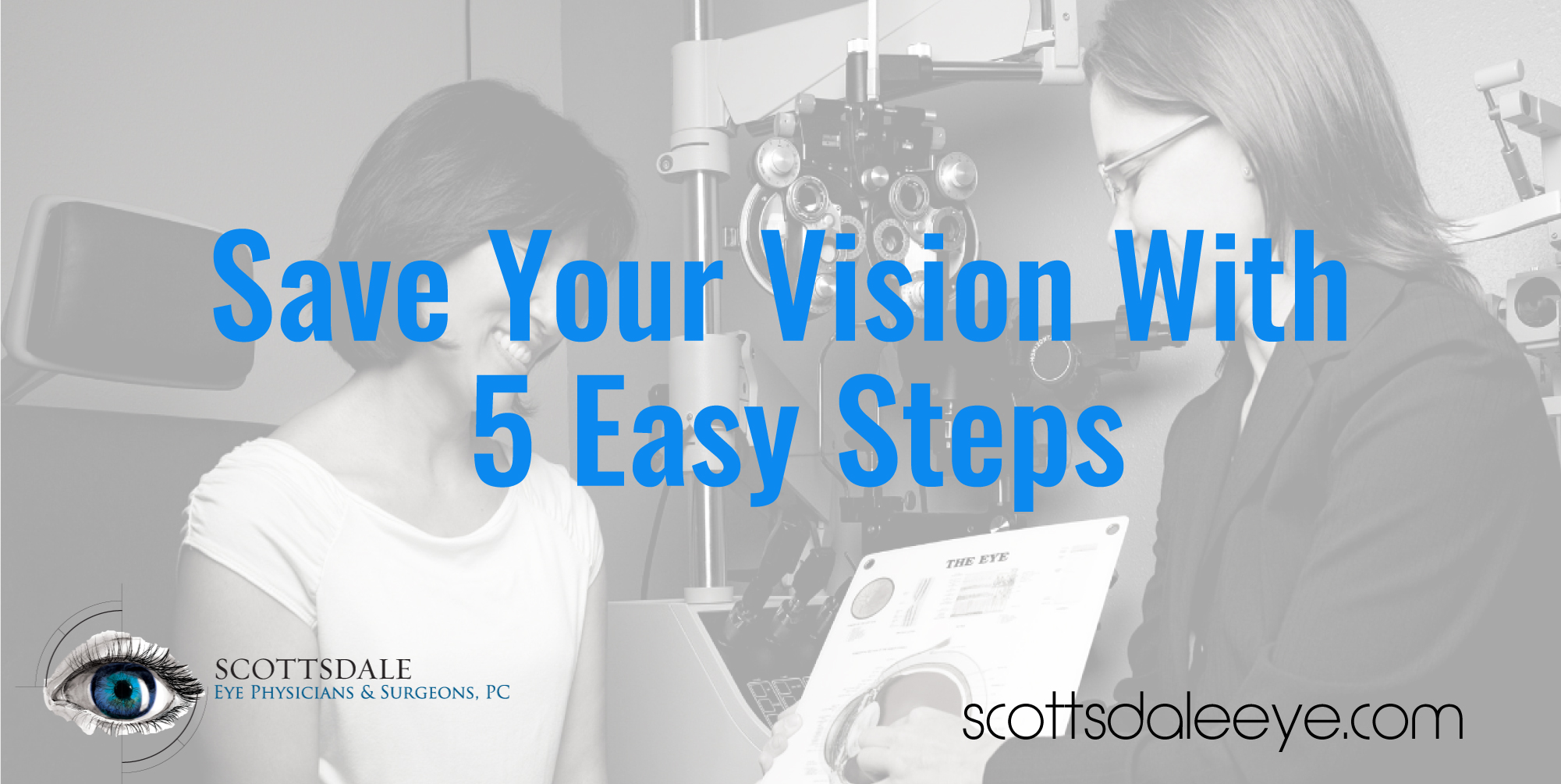5 Steps to Lower Your Risk of Eye Disease
By age 65, one in three Americans will have a vision-impairing eye disease. Many sight-robbing conditions can be effectively treated if detected early enough, in many cases limiting or eliminating the damage to eyesight. During the month of May, Scottsdale Eye Phycians & Surgoens, PC joins the American Academy of Ophthalmology in sharing valuable information about how to take care of your vision.
Four eye diseases — age-related macular degeneration (AMD), diabetic retinopathy, glaucoma and cataracts — account for most cases of adult blindness and low vision among people in developed countries. Because these eye diseases cause no pain and often have no early symptoms, they do not automatically prompt people to seek medical care. But a thorough checkup by an ophthalmologist can detect them in their earliest stages. Early treatment is vital because it can slow or halt disease progression or, in the case of cataracts, restore normal vision with Cataract surgery.
A thorough eye exam can also detect other health conditions, such as stroke, cardiovascular disease, diabetes, high blood pressure, autoimmune diseases, and some cancers. It’s not uncommon for a trip to the ophthalmologist to actually save a life.
The Academy’s global community of 33,000 physicians urges you to follow these five simple steps to take control of your eye health today: Get a comprehensive medical eye exam at age 40. Early signs of disease or changes in vision may begin at this age.
An exam by an ophthalmologist is an opportunity to carefully examine the eye for diseases and conditions that may have no symptoms in the early stages.
- Know your family history. Certain eye diseases can be inherited. If you have a close relative with macular degeneration, you have a 50 percent chance of developing this condition. A family history of glaucoma increases your glaucoma risk by four to nine times. Talk to family members about their eye conditions. It can help you and your ophthalmologist evaluate your risk.
- Eat healthy foods. A diet low in fat and rich in fruits, vegetables, and whole grains, benefits the entire body, including the eyes. Eye-healthy food choices include citrus fruits, vegetable oils, nuts, whole grains, dark green leafy vegetables and cold water fish.
- Stop smoking. Smoking increases the risk for eye diseases such as cataract and age-related macular degeneration. Smoking also raises the risk for cardiovascular diseases which can indirectly influence your eye health. Tobacco smoke, including second-hand smoke, also worsens dry eye.
- Wear sunglasses. Exposure to ultraviolet UV light raises the risk of eye diseases, including cataract, fleshy growths on the eye and cancer. Always wear a hat and sunglasses with 100 percent UV protection while outdoors.
“An eye exam doesn’t just check how well you can see, it evaluates the overall health of your eyes,” said Rebecca J. Taylor, M.D., clinical spokesperson for the American Academy of Ophthalmology. “The Academy encourages everyone, particularly if you’re over age 40, to get regular eye care. By making vision a priority, we can help protect our sight as we age.”
Make an appointment today for a Comprehensive Eye Exam, it could be live saving! To make an appointment call 480-994-1872 or click here to schedule online!
To learn more ways to keep your eyes healthy, visit the American Academy of Ophthalmology’s EyeSmart® website.

